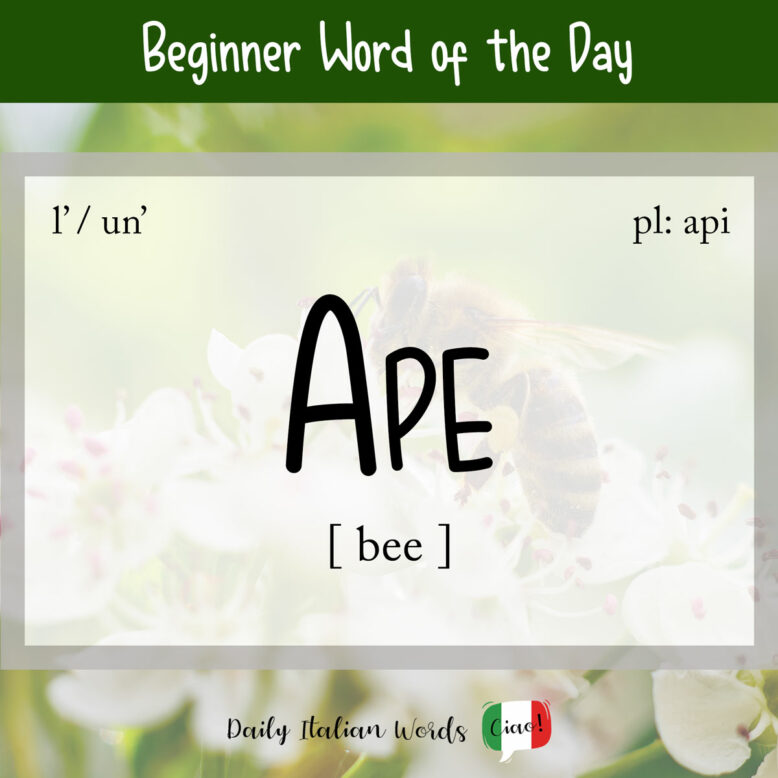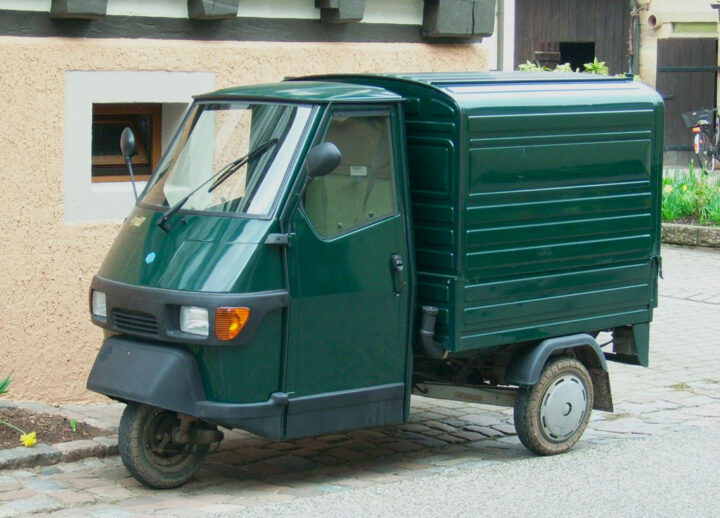The word for bee in Italian is ape (feminine, plural: api). It comes from the Latin apis of the same meaning.

Honeybees (api domestiche or api comuni) live in beehives (alveari) or colonies (colonie) which may consist of as few as 20,000 or more than 100,000 bees. The roles in the hive are as follows:
- one queen bee (ape regina)
- hundreds of drone bees (fuchi)
- thousands of worker bees (api operaie)
- thousands of larvae (larve)
Sono stato punto da un’ape!
I was stung by a bee!

The ape regina is female and is also the only fertile reproductive bee. The api operaie are female, but they are born sterile. They spend their entire lifespan foraging and creating wax cells (celle a base di cera d’api) which they then fill with honey (miele). The fuchi are male and their only job is to mate with the queen. They do not have a sting (pungiglione).
Did you know that…?
Ape is the commercial name for a type of three-wheeled vehicle made by the Italian motor vehicle manufacturer Piaggio. It consists of a cabin and a flatbed, and is intended for the transport of goods. It is an adaptation of the company’s Vespa scooter. (Vespa is the Italian word for wasp.)

Photo credit: Kolling – CC BY-SA 3.0
Heather Broster is a graduate with honours in linguistics from the University of Western Ontario. She is an aspiring polyglot, proficient in English and Italian, as well as Japanese, Welsh, and French to varying degrees of fluency. Originally from Toronto, Heather has resided in various countries, notably Italy for a period of six years. Her primary focus lies in the fields of language acquisition, education, and bilingual instruction.


